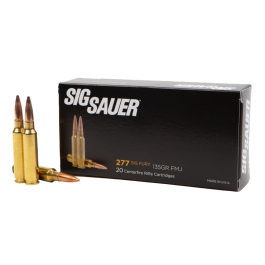Your missing one key element. Terminal performance. Most people get far too hung up on exterior ballistics (velocity, kinetic energy, drop, drift etc.) while assuming terminal performance is similar or the same between projectile diameters and form factors. It is NOT. Just as exterior ballistics favor 6mm and 6.5mm long form factor projectiles, terminal performance favors shorter 6.8 and 7mm projectiles.
There is NO FREE LUNCH. Projectiles that are long, slender that fly through the air well also slip through the target body quite well (aka they do notably less damage). The opposite is true for larger diameter projectiles. The trade off is exterior ballistic performance vs. terminal performance. 6.8mm was found to have the best compromise for combat purposes in killing 150 to 250 lb humans (and consequently works well on animals that size range).
Take a look at the measured energy transfer of these four projectiles all fired from the same distance into the same ordnance grade gelatin from Brass Fetcher:
View attachment 76713
Notice the area under the curve between 6.5 Grendel and 5.56mm? Not much difference! The 6.5 Grendel cannot easily transfer it's energy to the gelatin (these are live shots with electronic load cells under the gel blocks measuring the pressure wave in real time imparted to the gelatin). If the pressure wave is sufficient, it will cause enlargement of the permanent wound cavity made by the bullet as it cuts or crushes tissue. The pressure wave follows immediately behind the projectile.
The bigger the caliber, the better the transfer. Just look at .50 Beowulf! It's a beast. Now, obviously .50 Beowulf isn't very aerodynamic and has a relatively low velocity, so it's not a cartridge that is suited to anything but close range. That's the trade off, it's not a good flyer, it is a really good hitter up close.
View attachment 76714
Here's the result of barrier blind through auto glass. Note that all three (5.56, 6.5, 6.8) are TSX bullets, about as apples to apples as you can get. 6.5 Grendel did a decent job as did 6.8 SPC, .50 Beowulf is no doubt the top performer. But 6.8 still produces notably higher peak energy transfer than 6.5mm or 5.56mm, which means there's more peak stress on soft tissue that may cause additional tearing of already damaged tissue by the pressure wave following the bullet at is creates the permanent wound cavity.
For reference, shorter projectiles are inherently more stable than longer more slender projectiles, this is one of the reasons why 6.8 SPC bullets perform more consistently compared to 6.5mm bullets when passing through barriers, because the form factors are different (meaning 6.5mm destabilizes more easily, you get more variation shot to shot on impact). 6.5mm has a tendency to completely destabilize and tumble when passing through the barrier, dumping all of it's energy too early and failing to penetrate adequately. I would make the claim that it will be inherently less consistent shot to shot on game animals, especially those with heavy bone structures or when firing through brush.
Also note that the slope of the nose section affects drag when penetrating the target, not just when flying through the air. 6.8mm projectiles in the shorter form factor tend to have shorter noses and a larger diameter, implying the slope is steeper than typical 6.5mm or 6mm low drag bullets. Low drag in air = low drag in target. High drag in air = higher drag in target = more energy transfer. Again, it's a balancing act between loss of velocity, drop and drift vs. optimal drag upon impact.
View attachment 76715
If you want a good hitter, 6.8mm and 7mm performed the best at the velocities we can achieve out of barrels ranging from 12-18". If you want a good flyer, 6.5mm and 6mm provide the best exterior ballistics but lack terminal performance and barrier blind performance comparatively, not just because of the smaller diameter, but because of the overall bullet shape.
So the real question, what's your intended use? Target shooting or killing things? If you want to kill things (e.g. hunting or duty rifle), 6.8 is still the better choice even it's not 6.8 SPC, you can consider the new .277 Sig Fury if you want .270 Winchester performance out of a 16" barrel. There's also the beast of a cartridge 6.8 Western for big game / long range. If you want target shooting, well look to the 6 and 6.5mm cartridges as they are optimal flyers for target shooting and paper punching.
Any of these projectiles are lethal, but it's a matter of how consistently and how fast they achieve lethality. Bigger is better in that case.








